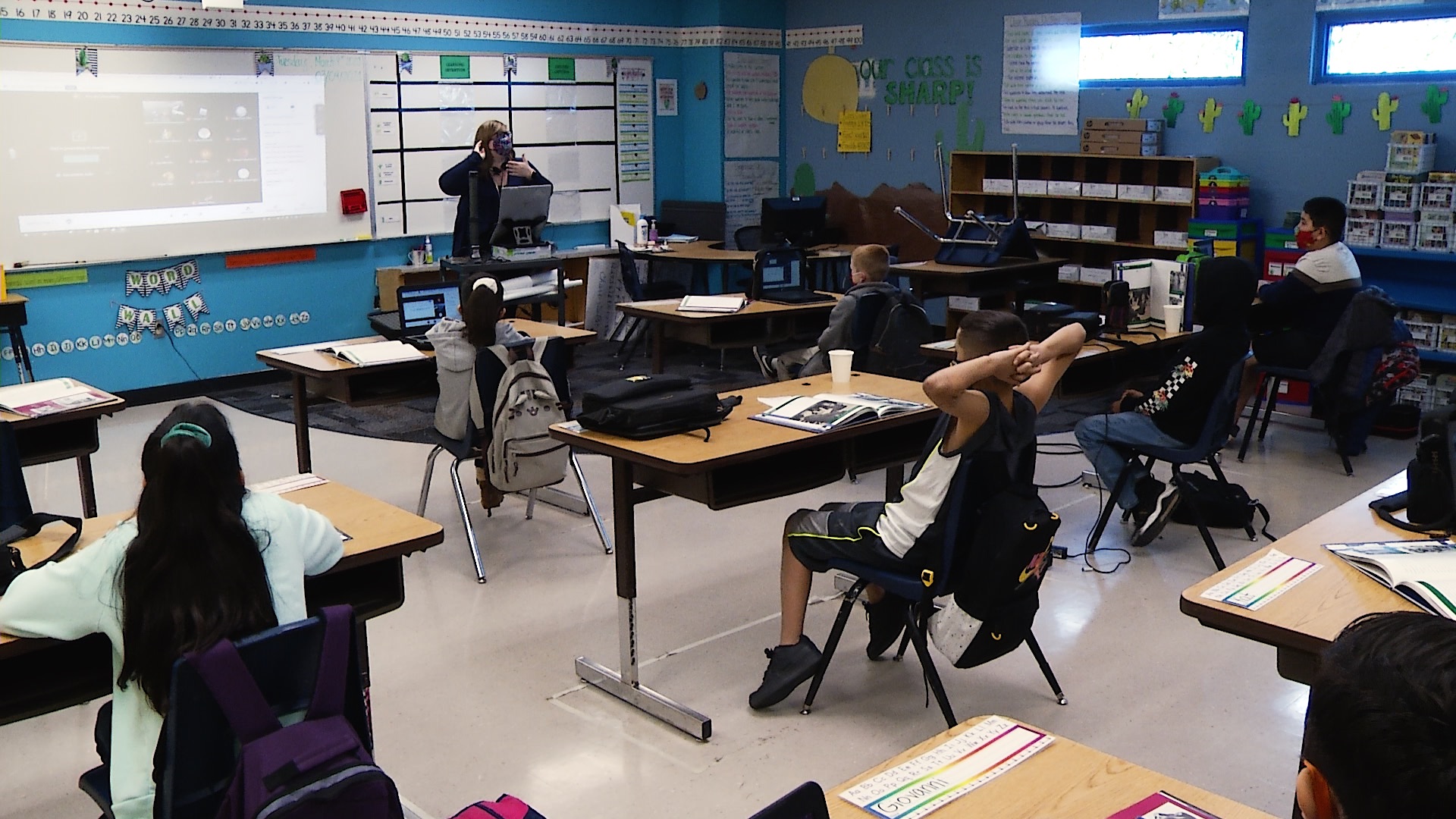 A classroom in the Sunnyside Unified School District.
A classroom in the Sunnyside Unified School District.
Arizona Governor Katie Hobbs’ Educator Retention Task Force released their report Wednesday, which shows as of last year, 68% of teaching positions were vacant in Arizona into the first few weeks of the school year or were later filled by persons who did not have the standard certifications.
The report said in the 2021-2022 school year, 58% of schools in the state struggled or failed to fill teacher vacancies. In comparison, nationwide, 47% of schools struggled or failed to fill teaching positions for the same time frame.
Cochise County Superintendent of Schools Jacqui Clay said about 70% of teacher positions in the county are currently filled and about 30% are vacant.
“One of the reasons is because we’re so rural," said Clay. "Usually, somebody is young, they want the city life or they want a lot of things to do. And we are basically a retirement, very, very rural place … It’s like Mayberry. But we do have problems keeping the teachers here. Sometimes, it has to do with housing … A lot of times, it has to do with pay because being down here in a rural area, we don’t pay as much as the people in the north — schools in the north.”
While positions for special education were hit the hardest by teacher shortages, the report shows that low-income rural public schools experience a 28% higher attrition rate than low-income schools in urban areas.
Pima County Superintendent of Schools Dustin Williams told AZPM that struggles with retention aren’t new.
“So you’ve got people that are struggling to stay in a profession because it’s so demanding and difficult," Williams said. "On top of that, you’ve got a super low wage, which doesn’t help motivate people to kinda look that direction or stay in that field.”
The report says Arizona has one of the highest percentages of teachers who plan to leave the profession at 13%, compared to 8% nationwide.
Additionally, the report shows the average salary for Arizona public school teachers in the 2021-2022 school year was $56,775, whereas the national average was $66,745. When compared to a state’s minimum living wage of $52,528, the report says that puts most entry-level teachers in Arizona in the low-income bracket.
Some of the task force’s recommendations include increasing teacher pay, collaboration with state agencies to lower insurance costs for educators, and paid parental leave.
When it comes to recruitment, the state legislature has in the past year attempted to make changes to the law to encourage more hands-on opportunities for undergraduates to get into the classroom while they are in the process of getting their bachelor’s degree.
Formerly known as Senate Bill 1159, which was signed into law by former Governor Doug Ducey in July of 2022, schools that have a “classroom-based preparation program” can enroll a candidate who does not have a bachelor's degree but meets background check requirements; the candidate also must be currently enrolled in an accredited bachelor's degree program. That candidate can be employed by a public school or charter school, but cannot teach in the classroom without the supervision of a full-time certified teacher.
More than a year on, Marisol Garcia, the president of the Arizona Education Association, said that the law places teachers-in-training, and certified teachers, in an overwhelming situation.
"You have to imagine what it's like if somebody across the hall is unaware of how to deal with difficult situations with children, emergency situations, situations where students are refusing to follow rules, or just everything from how to teach a specific lesson plan or standard that we're expected to teach," said Garcia. "As a veteran educator across the hall, it's my responsibility to kinda walk over and help because this cannot be done alone ... What we find in these situations becomes a burden for veteran educators."
Tucson Unified School District Superintendent Gabriel Trujillo said that his school district has seen a "significant shortage" in teachers.
"We began the year with about 130 vacancies or so — teacher vacancies — which is a lot," said Trujillo. "Our vacancies are more pronounced in the areas of special education, math ... We've tried to do things like stipends for special education teachers, stipends for math, stipends for re-locations outside of Pima County. It just doesn't seem to move the needle ...
"Base salary is the question," Trujillo continued. "And until I think the base salary gets addressed, I think we're just going to be piecemealing initiatives here, initiatives there, signing bonuses here, signing bonuses there."
He said the ratification of S.B. 1159 has not had much of an effect on teacher recruitment.
"I don't think it's had the desired effect," said Trujillo. "We just don't see the applicants coming that don't have a four-year degree."
Through an executive order, Governor Hobbs created the Educator Retention Task Force in February of this year.


By submitting your comments, you hereby give AZPM the right to post your comments and potentially use them in any other form of media operated by this institution.